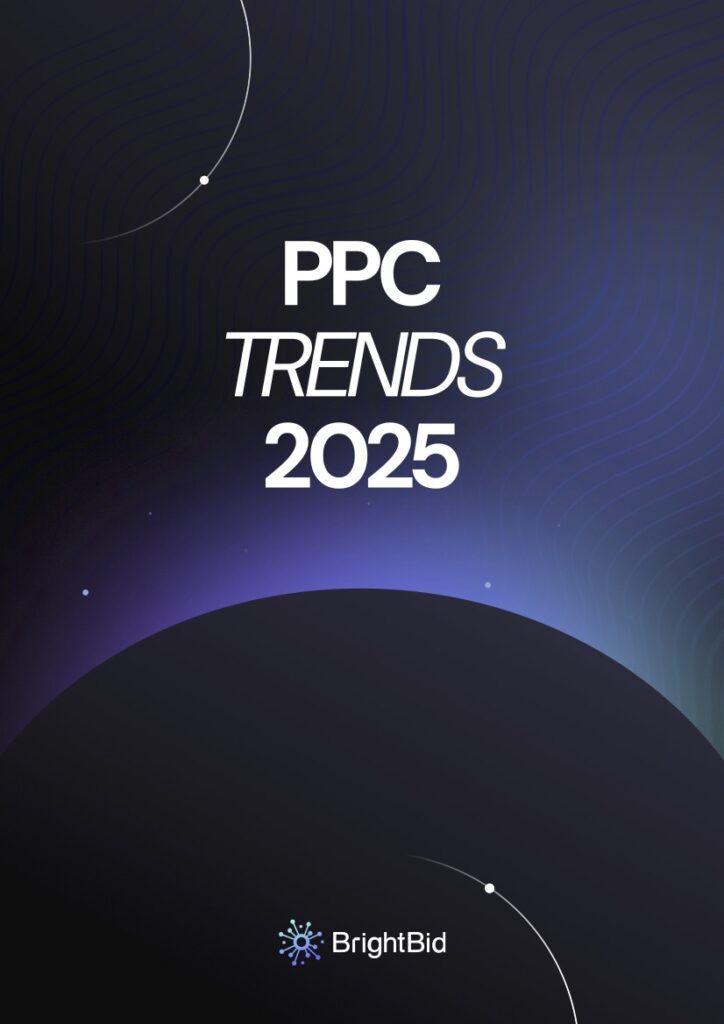PPC advertising is evolving at an unprecedented pace. Emerging AI-driven technologies and shifts in user behavior are reshaping digital advertising strategies, making adaptability more critical than ever. As we head into 2025, staying informed on upcoming trends will be essential for businesses looking to maintain a competitive edge.
Here are five key trends that will likely shape the PPC landscape in the coming year.
1. Voice-Prompted Bidding: Adapting to Natural Language Queries
With the growing use of voice assistants like Siri, Google Assistant, and Alexa, search behavior is shifting from keyword-driven phrases to conversational queries. Instead of typing «best laptop remote work,» users are more likely to ask, «What’s the best laptop for working from home?»
📌 Example in Action: A tech retailer could bid on long-tail, question-based keywords like “Where can I buy a lightweight laptop with a long battery life?” rather than traditional keyword structures. AI-powered bidding will help advertisers prioritize high-intent conversational phrases, ensuring their ads align with the way users naturally speak.
2. Emotional Relevancy Bidding: Ads That Respond to User Sentiment
Rather than displaying generic ads, AI-driven ad platforms will analyze user sentiment in real-time—using search queries, browsing behavior, and engagement signals—to deliver ads that align with a person’s current emotional state.
📌 Example in Action: Imagine a user searching for «ways to relieve stress after work.» Instead of a standard ad saying, «Try our meditation app!», an emotionally responsive ad might read: «Feeling overwhelmed? Find instant calm with guided meditation.» By mirroring the user’s emotional intent, these ads are more likely to engage and convert.
3. Smart Billboard Attribution: Bridging Offline and Online Marketing
Traditional out-of-home (OOH) advertising, like billboards, is becoming more trackable thanks to geofencing and mobile data tracking. Advertisers can now measure how many users who saw an ad on a billboard later visited the website, store, or engaged with digital content.
📌 Example in Action: A brick-and-mortar business—a concert venue—promoting an upcoming show could use geofencing to track smartphone data of people walking by their billboard. Those who come within range could then see retargeted ads on social media with an exclusive early-bird discount for tickets, reinforcing their exposure to the ad.
4. Predictive Keyword Matching: AI-Driven Precision Targeting
Google’s AI-powered Performance Max campaigns are changing how keywords are matched to queries. Instead of relying on broad-match keyword lists, machine learning will analyze user intent dynamically, refining campaigns in real time based on search behaviors and contextual relevance.
📌 Example in Action: A fitness brand may traditionally bid on «best running shoes.» But AI could recognize emerging trends and user behavior—for example, increased searches for «marathon training shoes»—and automatically adjust bids and keyword targeting to capture high-intent users before competitors do.
5. Ad Fatigue Modeling: Reducing Overexposure Without Losing Engagement
Repeated exposure to the same ad can reduce engagement and waste budget. AI-driven ad fatigue modeling will use real-time data to adjust ad frequency dynamically, ensuring users don’t get overwhelmed by repetitive messaging.
📌 Example in Action: A travel company running a summer vacation campaign might notice that users who have seen their ad four or more times without clicking are experiencing fatigue. AI could pause that specific ad for those users and replace it with a fresh creative—such as a limited-time discount or a different visual—to re-engage potential travelers.
Preparing for 2025: What’s Next?

These trends highlight the increasing role of AI, real-time data, and personalization in PPC advertising. While some of these technologies are still evolving, staying ahead of these developments now will give marketers a significant advantage.
Want to discover more trends and get a deeper dive into how they will shape the industry? Our 2025 PPC Trends eBook explores these shifts in more detail, along with practical strategies to help you refine your campaigns and maximize ROI.
👉 Download the full eBook now to ensure your PPC strategy is ready for 2025
 » />
» />
 » />
» />
 » />
» />
 » />
» />
 » />
» />
 » />
» />